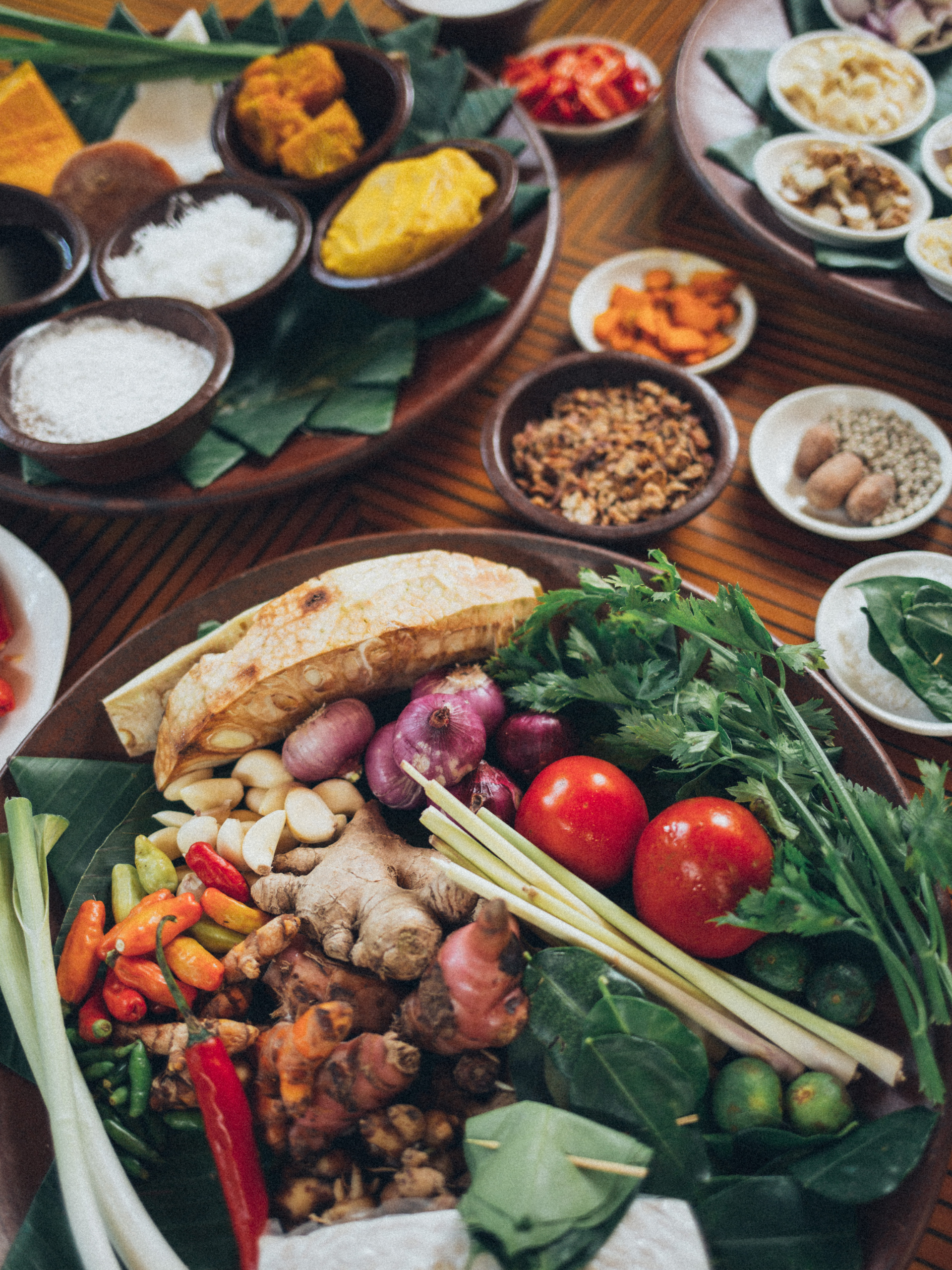

Food is a really powerful tool to shape the world
“How do you feed a city? It is one of the great questions of our time. Yet it is one that is rarely asked.” (Steel, 2009)
In 2009, during a TED Talk on how food shapes our cities, Ms. Carolyn Steel addressed the above-mentioned concern. This is even more relevant when looking at the future.
The Department of Economic and Social Affairs of the United Nations projected that the world population will reach 9.8 billion in 2050, of which 70% is expected to be living in cities (UN, 2017; Calmon et al., 2018). Our agricultural output has to increase by 70% in order to feed this massive population (Oda, 2019). As a result, cities will be overcrowded, infectious diseases and viruses will spread faster, and water supplies will decrease (Sterbenz and Brodwin, 2015). Due to inadequate water access, fields cannot be irrigated which is threatening the food supply (ibid). At the moment, the largest consumer of water is the agricultural industry; using 70% (Oda, 2019).
In September 2020, a complication of the latest climate science information was published by the World Meteorological Organization (WMO, 2020). The United in Science 2020 report was compiled under the direction of Mr. António Guterres; Secretary-General of the United Nations, and in collaboration with several key global partner organizations. The report is stating key messages concerning the worldwide climate crisis.
Over the years global warming and climate disruption have continued apace (Guterres, 2020). Globally, the last five years have been the warmest on record (Luterbacher et al., 2020). Consequently, polar ice is melting and causing an increase in sea level rise, which threatens water supplies (ibid). Extreme weather and climate events have caused major impacts; like droughts and floods (ibid). A clear human-induced fingerprint was found on many of these events (ibid). Life-sustaining systems are affected by climate change and it has a cascading effect on ecosystems and human security (Luterbacher et al., 2020).
According to Guterres (2020), it has been an unprecedented year for people and the planet. Lives are disrupted by COVID-19, and simultaneously, communities, nations and economies are affected by record heat, ice loss, wildfires, floods, and droughts (ibid). This will continue to worsen (ibid). Temperatures will even further increase, unusual rainfall is expected, and the Arctic is predicted to heat up twice as fast (Luterbacher et al., 2020).
The influence of farming can worsen and relieve the climate crisis (Irfan, 2019). People’s diets have changed due to factory farming, globalization and better refrigerators (Frangoul, 2020). Nonetheless, the availability of food has been taken for granted; believing that food has magically come from somewhere is part of an unsustainable diet (Steel, 2009). Most people are spoilt for choice when it comes to deciding on what to eat (Fanzo and Herrero, 2019). Nowadays, all kinds of items are flown in from around the world, think of exotic fruits and vegetables, seafood and various types of meat (Frangoul, 2020). However, there are significant environmental costs. It has never been so clear that we need to change our consumption patterns in order to help the planet and support climate action (Luterbacher et al., 2020; Fanzo and Herrero, 2019).
30% of all produced food is wasted, this equals 1.6 billion tons (Oda, 2019; FAO, 2020). The food is either spoiled while transporting or expired (Oda, 2019). Throwing out leftovers and/or unused ingredients without considering it twice, is a form of ‘luxury’ and more doable for people who have easy access to food (Frangoul, 2020). We have to change how we eat and how we grow food in order to fight climate change (Irfan, 2019). What we currently eat, how we nowadays get our food and how we use our food are contributing to heating and destroying the planet (ibid).
Mid-century is only a few decades away, and humanity has failed to solve many of its problems (Sterbenz and Brodwin, 2015). Major issues are awaiting the world, the world in which many of us will grow up. I strongly believe that our generation can play a significant role in solving these global problems, and I find it remarkable that we have not done that before. Ms. Carolyn Steel spoke about it in 2009 and over the years, not much has changed. I chose to write about this topic because I find it heartbreaking to see how much harm we do to people and the planet and how neglecting we have handled it. It scares me and I think that the ‘true price’ we will eventually pay, is of unprecedented value because it includes enormous environmental issues and health problems.
In essence, a more people and planet-based approach to food call for a reconsideration of a city’s relationship with its immediate hinterland. To save the world we must shift away from the current unsustainable diet. This memorandum answers the question of which ‘type’ of solution we can best implement to conquer worldwide problems. Therefore, technology-driven solutions are first discussed. Subsequently, ancient-driven solutions are presented. Finally, a conclusion follows.
The first approach is technology-driven; based on the perception that technology can fix all our food needs. It started in the 19th century, during the origin of modern agriculture (Babelon, 2019). The German chemist Justus von Liebig observed that a combination of Nitrogen, Phosphorous, and Potassium was responsible for plant development (ibid). Together with the arrival of the combustion engines and the railway expansion, these artificial fertilizers and pesticides had greatly influenced farming and transformed agricultural practices into large-scale industrialization (ibid). During the industrial revolution, the relationships between cities and hinterlands were completely reshaped. Before the 19th century, cities were reliant on the capacity of their hinterland which limited the size of the city (Steel, 2009).
Ever since the industrial revolution, food and eating practices have changed significantly alongside mass production and fast-evolving landscapes (Babelon, 2019).
The arrival of supermarkets transformed habits, landscapes and economies (Steel, 2009). The number of food markets declined as a result (ibid). Ready meals, fast food and liquid nutrient solutions are part of ‘iconic’ modern food and eating practices (Steel, 2009; Babelon, 2019).
Soylent is an example of a liquid nutrient solution, a so-called 'complete nutrition', which might sound futuristic. In this case, soy protein is used to provide users with essential nutrients and healthy fats (Soylent, 2020). Mr. Rob Rhinehart, Co-founder of Soylent, wanted to turn his passion to better the food system into a business. “In the past food was about survival, now we can try to create something ideal” Rhinehart states (Steel, 2020). “Worrying about something as simple as food in the digital age is weird” (Rhinehart, 2013). It was not the goal to eliminate traditional food, but at Soylent, Rhinehart created a product that can be used for all those times when you need food as fuel, instead of skipping a meal or making an unhealthy, unsustainable or expensive choice (Soylent, 2020). Rhinehart shared that eating is time-wasting and that there are far more exciting things to do (Steel, 2020).
One-third of the world’s arable land is unproductive (Lang, 2006). Yet, the need for food continues (ibid). Given the scarcity of land and the rising demand for food, there is an urgent need for solutions (Calmon et al., 2018). A solution that requires less land and labour but produces higher yields. An example is vertical farming, also called controlled environment agriculture (Oda, 2019). Three-dimensional spaces are used to achieve more production. Microbiologist Dickson Despommier was the first who conceived this idea (Steel, 2020). Vertical farming organizations use sophisticated monitoring and automation systems to increase productivity and efficiency (Oda, 2019). The yields are much greater than the ones of conventional farmers. Because of the year-round production, multiple growing layers, consistent quality and dozens of harvests (Steel, 2020; Oda, 2019). Disadvantages are the high capital and operating costs (Calmon et al., 2018).
In her book The Fate of Food, Ms. Amana Little presents and discusses other technology-driven solutions. Such as lab-grown meat, known as the Google burger, robot weedkillers, 3D printed meals and cloud seeding (Little, 2019).
The second approach is ancient driven and inspired by the perspective of Ms. Carolyn Steel; based on philosophy and historical knowledge. Going back to an environmentally and socially friendly agriculture, that is characterised by craft, reconnecting and appreciation (Babelon, 2019; Steel, 2020). These solutions tend to solve the underlying matter and showcase that we must see food as more than a commodity.
According to Steel (2020), it is more important to consider the thinking patterns that got us into this mess, than applying technology to the problems that we as a modern society have created. Our global issues contain technical, personal and philosophical aspects.
We live in cities as if they are the most natural things on the planet, but when you think about it, we forget that we are greatly dependent on nature. That landscape is being transformed to feed us (Steel, 2009). Nowadays, more of us are eating meat, therefore 30% of the annual grain crop is fed to animals instead of human beings (Delvin, 2018). This takes three times as much grain and is not an efficient way of feeding (Steel, 2009). The number of people living in the cities is likely to triple in 2050 (Sterbenz and Brodwin, 2015). Urbanism and meat consumption are rising hand in hand (Steel, 2009; WHO, 2020). This poses enormous problems and if we carry on like this, we will not be able to solve it.
Food is being produced at great cost and at the same time, it is not valued. As said before, we throw away so much food. And at the end of the day, we are not even managing the planet properly. “A billion of us are obese, while a further billion starve, none of it makes very much sense.” (Steel, 2009). This started during the industrial revolution, which is really the moment in time when the relationship with food changed completely. We drove to supermarkets to buy enough groceries for weeks, arriving home, we had no clue what to do with it. In the past, food was the centre and the social core of the city (Steel, 2009). It was a social event; trading and buying food. Today, it is anonymous. “We do not value food. We do not trust it. So instead of trusting it, we fear it. And instead of valuing it, we throw it away.” (Steel, 2009)
Our relationship with food has completely changed over the years. Food is more than fuel, food is a connecting element (Steel, 2020). “It connects us to one another and to our world” (ibid). It is also used to express love and the sharing element of food is a central component of connecting with one and another (ibid). We can show our love through growing, cooking, and eating food.
The modern food system promises to make things easier, but instead, they make it much harder. According to Steel (2020), the relationship between humanity and nature is the most important. But by making it possible to build cities anywhere in the world, we have distanced ourselves from this principle. Human beings are dependent on these systems. But these systems are unsustainable.
Yet again, the million-dollar question is: what are we doing about this to save the world? Ms. Carolyn Steel uses the term ‘Sitopia’, meaning ‘food place’ (Steel, 2009). Derived from the ancient Greek ‘sitos’ for food, and ‘topos’ for place. According to Steel (2009), we already live in Sitopia because we live in a world shaped by food. Once we realize that, we can use food as a very powerful tool (ibid). We must go back to valuing food; celebrating, enjoying and taking the time. Food should have a centralized place in our society.
This can only be realized, when we have people who think, think ahead and plan. Individuals who recognize products, and who are actively part of a network of food markets where food is locally grown. It must be common, fresh, and part of the social life of a city and its landscape (Steel, 2009). Reconnecting with nature has become extremely important, it is a way of seeing and recognizing (Steel, 2020).
An example of a more philosophical solution is aquaponics, which is a blend of fish farming and vegetable production (Babelon, 2019). It is a closed nutrient cycle and a combination of aquaculture and hydroponics (North, 2016). In this situation, plants are grown without soil and are fed with the aquatic animals’ discharge (ibid). The plants clean the water that goes back to the fish. A perfect collaboration between gardening and aquatic animals is the result (ibid).
Compared to lab meat, edible insects are a more traditional alternative (Babelon, 2019). Insects are promoted to be a great source of protein and more importantly as a sustainable source (Frangoul, 2020). They contain high-quality protein, vitamins and amino acids (FAO, 2020). Not only the nutritional value is beneficial, but the impact on the planet is also less harmful (ibid).
A few other ancient and philosophy-driven solutions are; organic farming, the slow food movement, urban gardens and permacultures (Babelon, 2019).
To conclude, to save the world we must shift away from the current unsustainable diet. Never before it has been so clear that we need to change our behaviour. Long-term, sustainable and inclusive solutions are needed to tackle the climate crisis and create a sustainable diet. Our food system needs to be reshaped radically. However, there is no silver bullet.
Nonetheless, I believe that we can best implement ancient-driven solutions to overcome worldwide problems. We must reconnect with the earth to recover from this global crisis and save the world. In my opinion, this is most successful because the root causes are solved. Whereas, the ‘futuristic’ methods are solving consequences.
As soon as possible, we should surround ourselves by productive farmland where effectively, central food distribution centres are playing the lead. We must establish all these little food networks in order to be productive and support the organic framework. To summarize, it is about creating permacultures, and a re-conceptualization of the way food shapes our lives (Steel, 2009).
I urge you all to carefully read the future predictions, unite behind research and take urgent action to set a path towards a healthier, safer and more sustainable future for all of us.
Food shapes the city and the city shapes food.
- Marijn van der Grint




